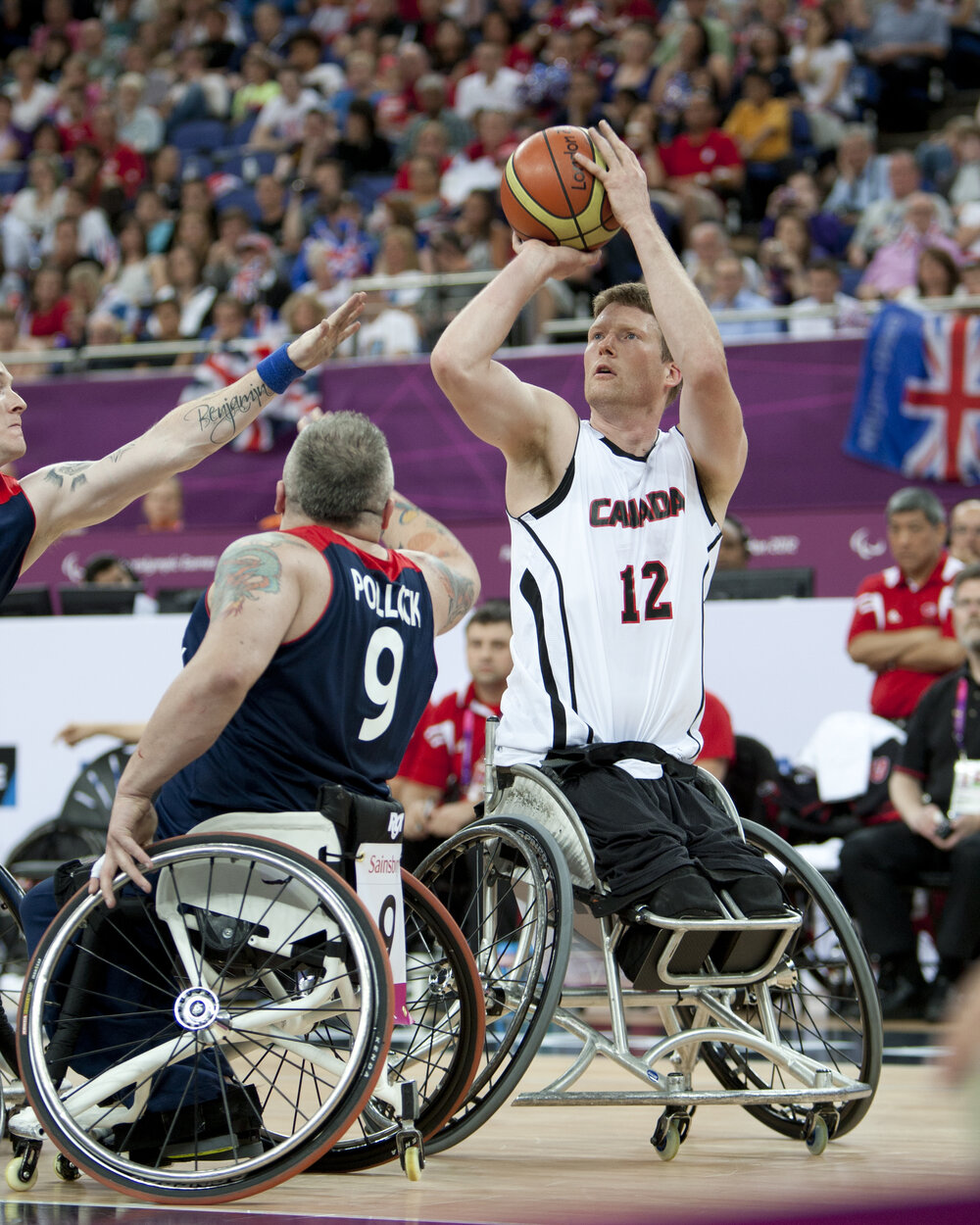The Patrick Anderson Story Focuses on Paralympic Basketball
Documentary’s audio highlights the sound of another kind of rim on the court
Story Highlights
The Patrick Anderson Story follows the career of its eponymous subject, who has come to be widely known as “the Michael Jordan of wheelchair basketball.” The 41-year-old Patrick Anderson, who lost both legs below the knee in a car accident when he was 9 years old, helped lead the Canadian basketball team to gold medals in the 2000, 2004, and 2012 Paralympics and to a silver medal in 2008. After a break from basketball, during which he relocated to Brooklyn to form a band with his wife, Anderson is back with the Canadian team, preparing for the Tokyo Paralympics games (Aug. 24–Sept. 5, NBC Sports).

For documentary on Paralympian Patrick Anderson, archival footage and audio are critical to telling the story.
Produced by Toronto-based Bloomfield Productions, slated for the CBC’s AMI outlet, and directed by Ryan Marley (who also directed three seasons of Hockey Wives reality series, which set ratings records on Canada’s W Network) the documentary uses archival footage and audio, as well as new content recorded during the team’s practice sessions at Toronto’s Pan Am Center.
The film has come along just when on-athlete audio is hitting its stride. “We have five or six microphones on players on the court, on the main characters and voices in the documentary,” says David Best, lead audio for the production. The sound from the players and the wireless cameras is synched via SMPTE timecode using Ambient NanoLockit wireless timecode generators.
Interestingly, the same microphones — Sanken COS-11D lavaliers with subminiature capsules connected to Audio Ltd. A10 recording/transmitter bodypacks — that collect the on-court vocalizations and conversations of athletes are also being used to capture most of the ambient sound of the production. That includes, most notably, the sound of the rubber wheelchair tires and rims, replacing the sneaker squeaks that are emblematic of basketball. The ambient sounds are augmented by a pole-mounted microphone wielded by Best over the court.
‘A Really Aggressive Soundscape’
“It is a bit jarring at first,” he says. “The game is notably quieter without the constant squeaks of sneakers, and the sound of metal on metal is less frequent [but] a much more aggressive sound when it happens.”
That last comment is a reference to the fact that collisions between players in wheelchairs happen in Paralympics basketball, just as they do in conventional games.
“That sound of metal on metal, and hands on wheels, and the sound of wheels skidding are all part of the effects mix,” Best says. “They all get picked up well by the lav mics.”
Marley, the director, notes that audio is critical in telling this story, with a slew of unique effects elements: subtle ones, such as the sound of prosthetic limbs being slid on and off, and the more brash ones from wheelchair collisions and their aftermath.
“The chairs colliding, the sound of metal on metal, and the athletes hitting the deck, falling sideways or backwards,” he points out. “In one session, Patrick went over backwards and hit his head. It’s a really aggressive soundscape.”
In a way, miking Paralympic basketball players is somewhat easier than wiring fully abled athletes, he says: the former’s movements tend to be horizontal and relatively smooth, rather than the constant and erratic up-and-down motion of most basketball play. As with NBA games, the mic capsules are attached to player jerseys. However, pro players wear a league-approved jersey with a sewn-in pocket designed to hold the Q5X transmitter usually deployed, but the Paralympic transmitters are secured to players’ bodies with Velcro-cinched mic belts.
“Players do occasionally fall out of wheelchairs during play, and you’ll hear that,” Marley says.
Best acknowledges that, like NBA players, many Paralympic basketballers were initially skeptical of being wired for sound during play but warmed quickly to the idea.
“When we first showed up,” he recalls, “they wondered what we were doing. Were we going to slow them down? But they recognized that, once we got the mics on them, we could back off. Now they don’t even notice them.”
